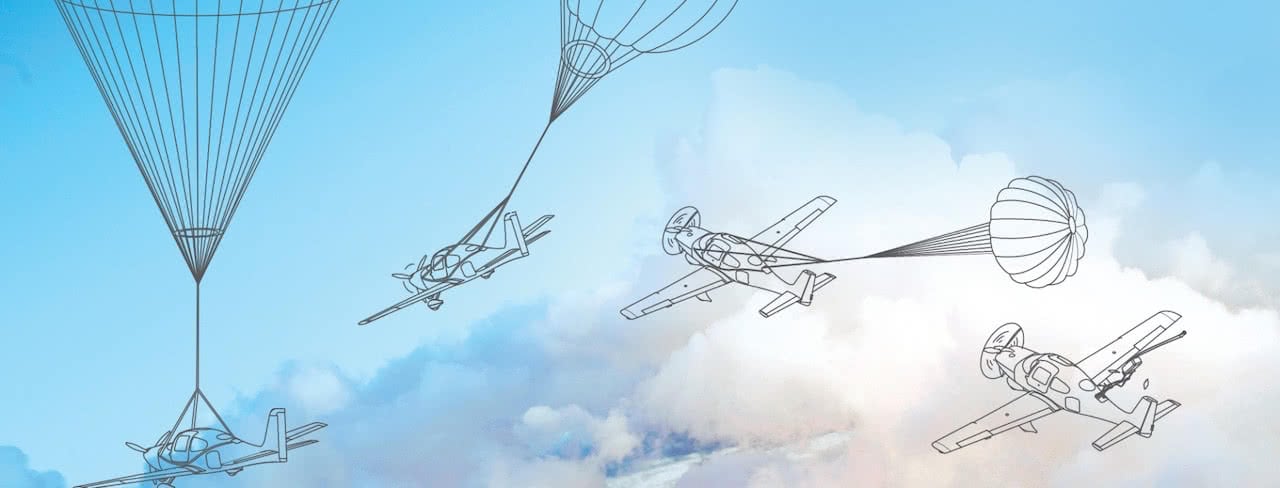

“It reflected a great deal of effort that had taken place during the preceding two years that got Cirrus pilots to train their brains on when to use CAPS. “There was a four-fold increase in the number of CAPS pulls in 2014,” said Travis Klumb, a Cirrus executive who helped develop Cirrus Approach. The watershed year was 2014 when, for the first time, there were more Cirrus CAPS pulls than fatal accidents. But actual CAPS saves have taken place at speeds up to 187 KIAS and altitudes as low as 444 feet agl during a descent.)Īs the number of CAPS deployments has increased, fatalities have gone down sharply. (The official CAPS max deployment speed is 133 to 140 knots depending on the model, and a minimum 400 feet agl in level flight or 920 feet in a spin. This saying, coined by COPA's Rick Beach a decade ago, was meant to get Cirrus pilots to commit to pull the CAPS handle before their airplanes gained excessive speed or lost too much altitude for the parachute to work properly. On March 5, a security camera recorded an SR22 coming down on the lawn of a building on Long Island, New York, and the father and daughter scampering out of the intact airframe.Īll these events were widely discussed among pilots and nonpilots alike and raised the profile of both Cirrus and airframe parachutes.

13, 2015, former Wal-Mart CEO Bill Simon was flying an SR22 with two passengers when the engine lost oil pressure over Arkansas, and Simon’s successful parachute deployment (and ATC audio) was recorded and widely shared via social media. Coast Guard C–130, showed the parachute deployment, splashdown, and the pilot’s almost immediate rescue by the crew of a passing cruise ship. But a timely parachute pull, which was recorded on high-definition, gyro-stabilized cameras by the crew of a U.S.
#CIRRUS PARACHUTE FULL#
25, 2015, had a fuel tank blockage that prevented the full amount of onboard fuel from reaching the engine and would have required ditching in high seas more than 100 miles from Hawaii. A ferry pilot flying an SR22 across the Pacific on Jan. In 2012, a pilot on a medical mission to the Bahamas successfully deployed the CAPS over water after an engine failure, and his story was shared widely. (Some parachute pulls took place at too high an airspeed or too low an altitude for CAPS to work properly.)Ī few CAPS deployments have become high-profile news events in themselves, accompanied by viral videos that have been viewed by millions of people.

There have been 79 Cirrus CAPS deployments to date, and 65 are considered saves, accounting for 131 lives. The pilot, who was alone in the airplane, deployed the chute, and it brought him down safely. The first Cirrus parachute “save” took place in October 2002, during a post-maintenance flight when an improperly installed aileron became stuck and caused a control malfunction. “ By doubling down on safety working with its owners group and making investments in training and transition courses, Cirrus leadership brought their accident rate to less than half the industry average.” Nall Safety Award,” said AOPA Air Safety Institute Senior Vice President George Perry. “ Over the past decade Cirrus has earned one of the best safety records in the industry, and we are proud to acknowledge their work with the Joseph T. The AOPA Air Safety Institute honored Cirrus Aircraft at EAA AirVenture July 24 with the first Joseph T. Last year, with more than 6,000 Cirrus aircraft registered, there were fewer fatal Cirrus accidents than any year since 2001, the year the SR22 was introduced and when fewer than 300 Cirrus aircraft had been produced. In 2014, the number of fatal Cirrus accidents fell to three during a year in which almost 6,000 Cirrus aircraft logged more than 1 million total flight hours. The results have been remarkable.įrom a peak of 16 fatal accidents in 2011, the number has steadily gone down every subsequent year despite the fact that more SR20s and SR22s are logging more total hours than ever. At the same time, the company and its tight-knit pilot group, the Cirrus Owners and Pilots Association (COPA), set out to create a culture in which pilots who pulled the chute were applauded-not criticized or second-guessed-for their actions. The company created a video-intensive, type-specific training program called “Cirrus Approach” that emphasizes deciding in advance when to use the Cirrus Airframe Parachute System (CAPS). Cirrus took a hard, unflinching look at the problem and then took action.


 0 kommentar(er)
0 kommentar(er)
